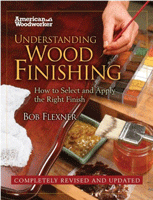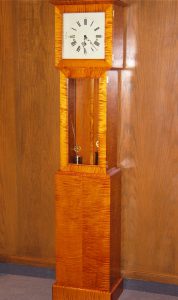We may receive a commission when you use our affiliate links. However, this does not impact our recommendations.
To maximize the beauty of curly maple (also bird’s-eye maple), you want the curls to “pop” – that is, be significantly darker than the rest of the wood. To do this you need to get more color into the curls.
To some extent this happens naturally with any stain when you wipe off the excess. Though it’s a lot more work, you can significantly increase the darkness, or pop, by applying a number of coats of thinned water-soluble dye stain and sand or scrape in between coats after each is dry.
A good choice of dye color is Honey Amber Maple from W.D. Lockwood (sold as “Moser” dyes at Woodworkers Supply). Thin the dye with up to five parts water, and apply up to five or more coats, sanding or scraping between each until you have removed all or most of the color between the curls. This way, each additional application of the dye will darken the curls and then be removed from between the curls.
Leave the last coat unsanded, and begin applying finish after this coat has dried.
You can increase the pop a little by applying a first coat of boiled linseed oil, wiping off all the excess. But you need to then allow the linseed oil to dry a week or so in a warm room before applying a film-building finish. More linseed oil will go into the curls than between the curls, and as it ages, it will darken, intensifying the contrast of the curls.
In fact, if you’re willing to wait for the contrast to fully develop, you can skip the stain and sanding and apply just boiled linseed oil. More of it will go into the curls, and as it darkens, the contrast will be intensified. This is the way I believe antique curly maple with highly defined curls was finished – a first coat of boiled linseed oil, followed probably by several coats of shellac.
You can finish by applying several coats of any finish, but oil finishes won’t produce enough shine or depth to maximize the contrast you’re trying to achieve. You have to use a film-building finish.
 Back in stock!
Back in stock!
Bob Flexner’s “Understanding Wood Finishing” is back in stock at shopwoodworking.com.
Here are some supplies and tools we find essential in our everyday work around the shop. We may receive a commission from sales referred by our links; however, we have carefully selected these products for their usefulness and quality.











